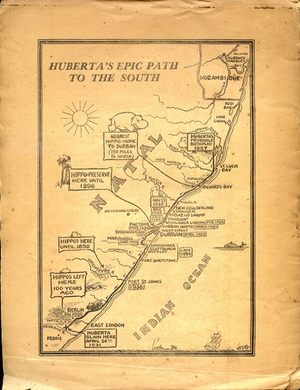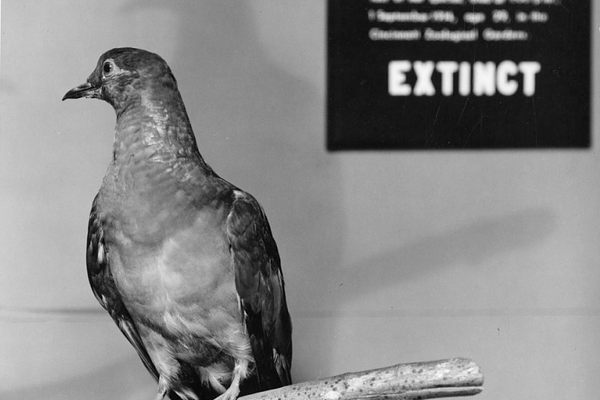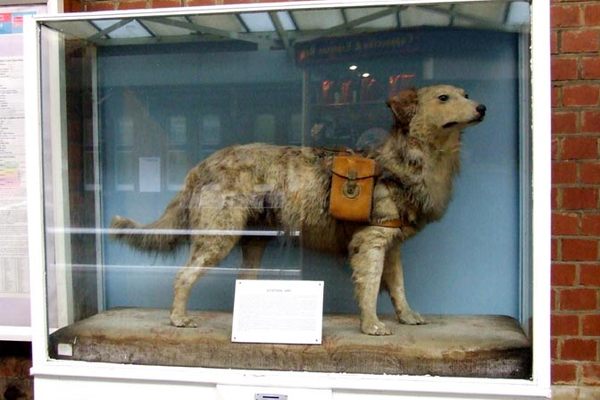Huberta the Hippo
Taxidermy of a famous hippo who spent three years walking over a thousand miles across South Africa.
Over three years, a hippo named Huberta traveled miles and miles over the terrain of South Africa, becoming a national icon and symbol of hope in a time of depression in the 1930s.
No one knows why Huberta started walking south in 1928. Some believed that she was looking for a lost mate, others that she was fleeing the killing of a parent, while still others thought she was making a pilgrimage to the places of her ancestors, where hippos had ceased to tread. No matter the reason, she kept walking until 1931, gathering more and more international attention and local love for the roaming hippo.
Huberta was thought to be a male until her death, and was nicknamed “Hubert” by the press (the “a” being later added to fix the gender misjudgment). It’s estimated she traveled over a thousand miles over the years, from her watering hole in the St. Lucia Estuary in South Africa’s Zululand, crossing the Black Umfolozi, swimming at the beach in Durban, bathing at night in the pond of a monastery garden, and even once stopping a train by sleeping on the tracks until she was gently nudged awake by the cattle-guard of the locomotive.
Tragically, her life ended in a rain of bullets in 1931. Although she’d been declared “Royal Game” by the Natal Provincial Council, meaning that she was protected, four farmers killed her near King William’s Town. Public outrage brought the Eastern Cape farmers to trial where her bullet-pocked skull was presented as evidence. They ended up each being charged 25 pounds.
After the trial, it and her skin were shipped to London to be taxidermied, and she’s now displayed as a beloved symbol of the Amathole Museum, and of the spirit of South Africa for its animals.






















Follow us on Twitter to get the latest on the world's hidden wonders.
Like us on Facebook to get the latest on the world's hidden wonders.
Follow us on Twitter Like us on Facebook